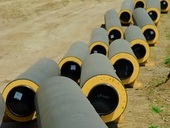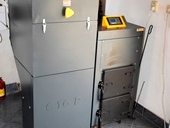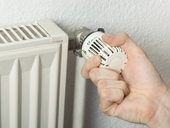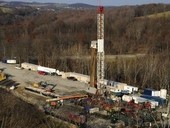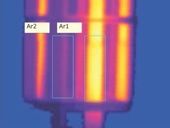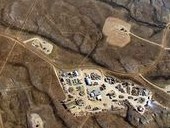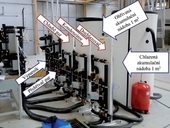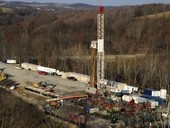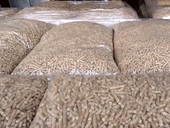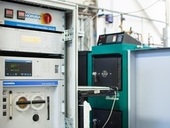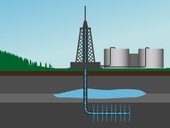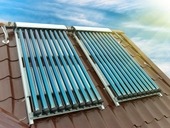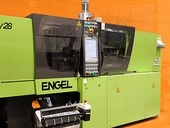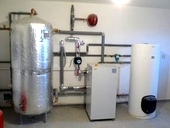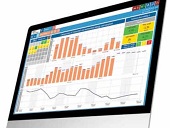As usual at this time also this year we bring information about sales of radiators in the Czech Republic. Data provided by the Association of heating technology (APTT) gives readers a picture of what types of radiators in the past year enjoyed the greatest popularity and how their popularity over the past ten years has evolved.
Archiv článků od 21.3.2015 do 22.6.2015
Article freely continues the theme of thermodynamic analysis of phenomena occurring in and around the pipeline construction, located in the sandy backfill, now with respect to theoretical foundations, describing the related effects of heat transfer. The article includes in particular the currently known insights into heat exchange in the case where the thermally insulated pipes placed near each other in the soil backfill. Individual processes intended to evaluate size of heat loss are used in the model calculation example a specific pipeline, whose real insulating state has previously been verified by measurement.
Coppice is a traditional type of forest management with short harvest period. It has all but disappeared from Czech countryside, but there has been renewed interest in coppicing in recent years. Coppice forests may become a substantial source of energy biomass in rural areas. Two approaches are most relevant: (i) Conversion of some current broadleaved high forests into coppice forests. Coppicing shows worse long term financial returns but higher biomass production and faster yield than conventional high forest. It is interesting for private and municipal owners of small forest properties. (ii) Minor changes in law would make government’s afforestation subsidies available for establishment of new coppice forests in farmland. Nevertheless, they will probably remain a minor counterpart to better yielding short rotation coppice.
What the year 2014 brought in sales of heat sources in the Czech Republic? Unfortunately, considerable disappointment for producers associated in the APTT. While the results of 2013 indicated a significant turnover in the form of a recovery in demand, next year not confirmed this trend. Data used in the assessment come from the Association of heating technology (APTT) and the Ministry of Industry and Trade (MPO).
In Europe, individual Member States are responsible for energy. Different countries take different approach. Complete ban on mining exists, for example, in Bulgaria, France and certain regions in Germany. On the contrary, Poland and Ukraine aim to develop shale gas mining in order to reduce their dependency on gas import from Russia. At EU level, there is currently no unified legislation covering exploration and exploitation of unconventional gas resources. Mining in EU, however, falls under the general European agreements and directives, including Treaty on the EU Water Framework Directive, Directive on the assessment of environmental impact, the Directive on waste from mining and regulatory framework for management of chemical substances REACH.
The paper deals with measurement of high surface temperatures by thermography method. The author verified by several experiments the theoretical assumptions of usability of contactless measurement of high temperatures. The experimental verification is focused on spectral sensitivity range of contactless devices and on application of special coating on measured surface. The ending of the paper is devoted to the influence of boundary conditions on the accuracy of the measurement.
Hydraulic fracturing raises concerns regarding possible contamination of groundwater resources, adverse effects on air quality, potential leaks of gas and other substances, treatment of waste material and various direct and indirect health hazards. Water used in hydraulic fracturing contains roughly 0.5 % of chemical additives including agents for reducing friction, preventing corrosion, eliminating microorganisms, gels and lubricants used for cooling the drill head etc. Serious debate concerning potential risks of commercial shale gas mining is taking place today throughout Europe.
The paper deals with modelling and experimental validation of the heat pump model with cooler of the vapours and aftercooler. The first part describes model of the individual components and the whole cycle, including boundary conditions. The constructed prototype and measuring circuits are described in the second part, including placement of individual sensors. The model of the heat pump has been verified by experiments on the prototype. The mathematical model shows high correspondence with measurement for most of the operational conditions. The mean deviation of measured and calculated power outputs is 4 % for standard configuration (only evaporator and condenser). For multi-exchanger configuration the model differs from the experiment by 10 %. The validated model can be further used for optimization and simulations in another computational programs.
Shales are sedimentary rocks. They are typically found in horizontal formations. Shale gas extraction therefore requires that miners “bend“ the drill head when approaching the layer with shale deposits and drill horizontally. It is also necessary to create large number of small cracks in the rock which allow the gas to escape. This is achieved by pumping large amounts of water with sand and other additives under pressure into the well. This process is called hydraulic fracturing or fracking.
In recent months, took place in Berlin and Wels important energy conference that addressed the importance of wood pellets and their role in heating. There were introduced detailed descriptions of world markets with pellets and especially detailed analysis of production and consumption of certified ENplus pellets in the world for the past year. In the following description of the main insights from both conferences that show trends in the pellet industry primarily from the perspective of Europe, which is a defining market for domestic development industry of Czech Republic.
Total recoverable shale gas reserves in China are currently estimated at 31.5 trillion cubic meters, which amounts to second largest (after USA) shale gas reserves in the world. Other Asian shale gas resources are located in India and Pakistan, Indonesia, Australia and Russia. Deposits of shale gas with potential for mining are also found in North and South Africa, Middle East and throughout Europe.
Second part of serial focuses on solar collectors. Basic axioms of solar thermal engineering are lost if designer or installation company wants to supply the a solar system at all „costs“. It is not easy to recognize the quality of solar collector at first sight. But i tis simpler and less expensive to make a cross-check of the solar collector than to replace one after another by new ones because of low heat output.
During the manufacturing of plastic products a waste heat rises. This energy is usually liquidated. Energetically and ecologically more efficient is to reuse the waste heat as it does in company IMS Drašnar Inc. located in Česká Třebová, Czech Republic. The usage of the system of waste heat recovery is described below.
There are no indicators (ie not an individual) that would measure the consumption of heat. The ones that are declared various lobbyists and some officials of ministries the term "devices registering heat energy supply", registering an ordinary temperature, according to which no one is able to determine the individual consumption of heat. Neither exactly nor approximately!
The article gives an overview of heat pumps installed in houses. For air/water heat pumps is important to observe the temperature range at which the device is able to operate and on the parameters of noise. For ground/water heat pumps are given the required depth of the borehole and surface area of the collector. The price for a complete installation of the heat source with heat pump varies from 150 000 to 500 000 CZK.
With an increasing number of installations pellet boilers and stoves in the Czech Republic (at the beginning of 2015 were registered about 21.000 installations of pellet boilers and 6.000 installations of pellet stoves) multiplies a number of service technicians and of course we also meet with different quality of service and installation. For this reason, at the end of 2014, appointed by the Regional Court in Brno, the first judge advocate witness for stoves, fireplaces, boilers and stoves for pellets Mr. Michal Nejezchleb. For the following interview he asked by Mr. Vladimir Stupavský, representing Czech producers and distributors of pellets and biomass boilers.
This year’s ISH fair (Installation, Sanitär, Heizung), held on March 10 to 14, 2015 in Frankfurt, Germany, had a slogan “Comfort meets technology”. It means that the companies aim to supply not only technologically advanced products, but also products with comfortable and easy operation. For systems and components for HVAC controls it means primarily easy-to-understand user interfaces with clean design. It showed primarily at room units, thermostats, and lights and blinds controllers with touchscreens and housings of simple shapes. Regarding system integrators, the point was in making configuration tools easy, and bringing part of the decision-making process to the engineering tools, thus cut down the engineering and commissioning time. Many booths claimed energy savings and energy management, which mostly meant classical SCADA systems and metering data acquisition, as energy management is expert activity, for which the SCADA and communication systems just provide the input data.
Domat Control System backed the hands-on experience this time. Visitors could try engineering and configuration tools at two test desks with both popular controllers (FC010, UC100, IPLC) and news like mark100 to markMX process stations range, programmable in Merbon IDE, the new engineering tool, which supports function blocks (FB) and structured text (ST) as well as compiling of customized function blocks. “Customers like especially support of standard communication protocols, like Modbus, OPC, and BACnet, together with more than 50 system drivers for third party systems, all of this well priced. The Domat components are used not only at homogenous building control systems, but also as a way how to integrate other technologies into third party SCADAs and management systems,” says Michal Šeda, head of product sales department. “With the most active distributors, Vedotech and S+S Regeltechnik, we discussed the market situation and acquired inspiration for further development.” Visitors were also attracted by a new room unit with hi-res colour touchscreen.
Domat Control System s.r.o. is Czech manufacturer of HVAC and energy control systems. The company was established in 2004, starting activities in energy management and control in 2008 by supplies of photovoltaic monitoring systems. About 55 % of the volume in 2013 was export.
zpět na aktuální články

